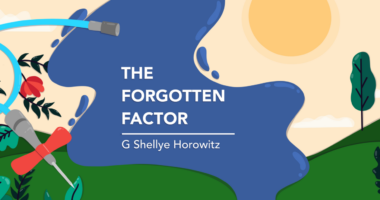The process of trying a different factor replacement therapy
Despite some initial fatigue, I'm hopeful about a new FVIII product

Note: This column describes the author’s own experiences with factor replacement therapy. Not everyone will have the same response to treatment. Consult your doctor before starting or stopping a therapy.
It is 10:30 a.m. and I am having my blood drawn. I am doing a trough level test, which looks at the level of factor VIII (FVIII) in my body before taking medication. I use factor replacement therapy to help prevent bleeds because I have hemophilia A.
After the trough draw, I am shown to a small room in the hospital. Taking out my new medication, I read the label: “Do not use if you are allergic to this medication or any of the components.” How do I know if I’m allergic when I’ve never taken it?
Nervously, I prep the medicine and infuse it into my vein. The process is easy, just like with my old factor product. Now I must wait 30 minutes before the peak draw — the blood test that shows how much the medication raises my FVIII levels.
At the 25-minute mark I feel a wave rush over me. My whole body gets warm and tingly and I feel like I’m going to pass out. Thankfully, I don’t. I take some allergy medication. I’m not sure it will help, but soon I feel better.
At 11:30 a.m. my blood is drawn again and I head home. I work for a few hours but find myself dragging a bit. At 3 p.m. I head back to the hospital for my four-hour post-infusion draw.
These timed draws, known as a pharmacokinetic study, are completed to give my medical team a sense of how long the new FVIII medication is staying in my body. This is important, as the longer it’s in my body, the more effective it is at preventing bleeding episodes.
Fatigue sets in
I arrive home at 4 p.m. and sit down for my final hourlong work meeting of the day. Afterward, I can barely keep my eyes open. I lie down for a one-hour nap that turns into three. Barely able to move, I am beyond exhausted. I get up and manage to eat dinner, only to fall back asleep — for the rest of the night.
When I wake up the next morning still fatigued, I realize this scenario is all too familiar: I had a similar experience 17 years ago when I took my first FVIII product.
Since I started using such products, I have struggled greatly with efficacy. The first one I was on was supposed to have a half-life of 12 hours in my body. (A half-life is the amount of time it takes for half of the medication to be cleared from your body. As mentioned above, a longer FVIII half-life is more ideal for patients with hemophilia.) The actual half-life of that first product I used was only 4.6 hours. I wondered if the profound fatigue I experienced back then was a result of my immune system working overtime to clear the product from my body.
As I find myself dragging now, I am fighting the urge to jump to conclusions. While I’m as tired as I was 17 years ago, this is a different medication. It will take up to a week to get my test results back. It’s possible the medication is working, even if all I want to do is spend quality time with my pillow. I’ve always been sensitive to new medications, and my body may just need time to adjust.
Changing FVIII medications
I know many people who have changed FVIII medications. We are fortunate that there are now many treatment options for hemophilia. I tend to be apprehensive about FVIII products, which stems from the trauma my family endured in the 1980s when my father was infected with HIV through his factor replacement. But I had been using products from the same pharmaceutical company for more than 17 years. While I’ve changed products before, they were similar. The main difference was the new one used PEGylation technology to increase the amount of time it stayed in my bloodstream.
This time, I decided to change products in part because I am at a higher risk of developing an inhibitor (where the immune system attacks FVIII medication, seeing it as foreign). Some FVIII products are believed to be better for people at risk of inhibitors because they’re derived from human cells rather than hamster cells.
It was a brave step for me to try a new factor replacement therapy, as I’m a slow adopter of change. I debated and delayed for years, talking to top doctors about the possibility. The knowledge they shared allowed me to confidently try another option. I hope it works!
Note: Hemophilia News Today is strictly a news and information website about the disease. It does not provide medical advice, diagnosis, or treatment. This content is not intended to be a substitute for professional medical advice, diagnosis, or treatment. Always seek the advice of your physician or another qualified health provider with any questions you may have regarding a medical condition. Never disregard professional medical advice or delay in seeking it because of something you have read on this website. The opinions expressed in this column are not those of Hemophilia News Today or its parent company, Bionews, and are intended to spark discussion about issues pertaining to hemophilia.








Leave a comment
Fill in the required fields to post. Your email address will not be published.